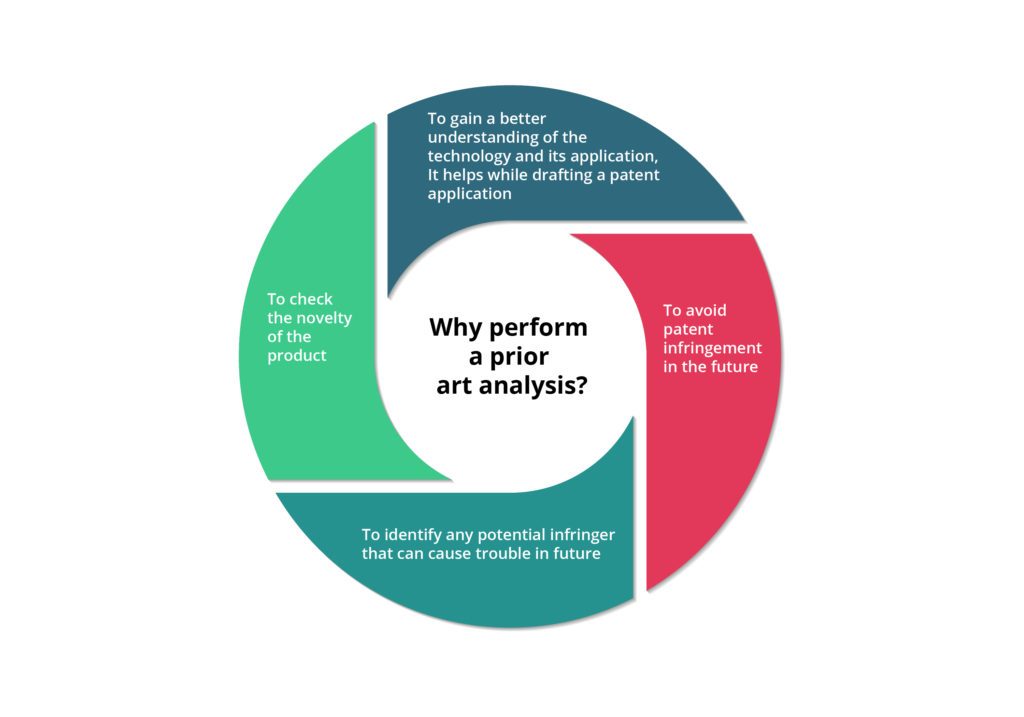Prior art in terms of patent refers to evidence that shows a certain product or idea is already present. It is also known as competing art. Prior art search is going through the available database to check the novelty of one’s product/idea.
Related article: Proofreading essentials: “The essential eight”
Why perform a prior art analysis?
Obtaining a patent is a costly and tough process. This analysis opens gateways to more information that can save time and money at various stages of development. Here are different aims of prior art analysis:
- To check the novelty of the product.
- Gain a better understanding of the technology and its application, It helps while drafting a patent application.
- To avoid patent infringement in the future.
- Identify any potential infringer that can cause trouble in future

When to carry out a prior art search?
Firms need to know when they need prior art analysis. Perfect timing can save a lot of money and resources. Here are some stages at whoch firms can conduct prior art analysis.
- Before starting research: Analyse prior art before conducting any research. It saves a lot of money. It reveals advances in technology. This helps the firms to change their approach for innovative work. Prior art analyzing gives ideas about industry leaders in a certain industry.
- During research: Researches have no limitations and venture into other fields. New researches are published at the time of ongoing research. It is important to track this information.
- Before using a product for commercial purposes: One must carry out a detailed Freedom to operate search. Search for patents that can create trouble for you. There is always a possibility of your patent covering the same things as any other patent.
Related article: Patentability search basics: Things you should know
How to conduct the search?
There is a stepwise approach to conduct prior art analysis. This approach provides a detailed search which is a necessity in this case.
Step 1: Find relevant keywords: It takes a lot of thought processes to come up with the right keyword. Searching for simple and obvious keywords will display numerous results. It is not helpful in this case.
For example- Searching for ‘laptop’ will show numerous results however keyword like ‘notebook computer’ will show fewer results. This helps in saving time and conduct accurate analysis.
Keep searching for synonyms to do keyword research. Find out what a certain product is called in different industries.
Step 2: Product searching: Find out existing products in the market. Two types of product searches are necessary.
- Product identical to your idea
- Product solving the same problem as your idea
Out-dated products are also considered as prior art, so look for them. One can also search in exhibition websites, news, journals, research papers. These are the main sources for the prior art search.
Take advice from experts with vast experience. They have more information than current practitioners. Also, a consulting firm who deals with similar products, they have market knowledge of existing and prior products.
Step 3: Patent Searching: It is the most important step. Most patents do not convert into products. It is essential to search for every relevant patent. Also, going through the claims is very critical for efficient outcomes.
Related article: Intellectual property (IP): paralegal facts.
How long does it take?
In the case of proper keyword, It takes a couple of minutes. However, one must not worry about the time during a prior art search. Firms must continue with it until they find satisfactory results.
One must focus on proving their product invalid. This approach helps in the best outcomes. More importantly, If you don’t come across any prior art, It is a possibility that you are doing it wrong.
Mistakes to avoid during the search!
There are few things everyone should keep in mind for a better result. Some small errors can convert to major loss. Make sure you don’t make these mistakes.
- Not investing sufficient time in prior art analysis. Firms must conduct deep and detailed analysis no matter how much time it takes. It plays a key role in attracting investors.
- Neglecting the negative results. Prior art analysis reveals outcomes that seem irrelevant because firms were not expecting it. It is necessary to have an open-minded approach
- Make sure to conduct prior art analysis at regular intervals. It keeps the inventors updated about the industry.
Can one conduct these searches on their own?
There are a few ways to do-it yourself. Few free tools in the market aids in performing prior art searches. However, it doesn’t guarantee a complete analysis. One cannot become an expert overnight. Professionals are trained and have industrial knowledge. They can easily go through claims and patents. Moreover, They have premium versions of free tools which results in a more complete and efficient prior art search.
Hire us for a professional for prior art search
The Patent Search Firm has more than 16+ years of experience in the IP field. Our team covers possibly every technical domain. Over 6500+ happy clients in 60+ countries.We go through every database in order to deliver precise results . Also, The clients can check the status of the work at any stage of the process.Moreover, 100 % customer satisfaction is our top priority. To know more, Visit our service page: The Patent Search Firm.
Other related articles:
Patent watch services: Types and advantages
Why patent assertion is important?
Contact Us Now:
"*" indicates required fields
